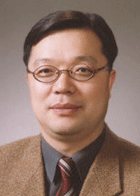
사과대 행정학과 교수
지금까지 알려진 바에 따르면 쌀 직불금 수령자가 총 150만 명이고, 이중 약 5만 명 정도의 공직자들이 쌀 직불금을 수령하였다. 이들 공직자들 중에서 부당수령자가 어느 정도 될 것인지는 앞으로 정부의 추가 조사 과정을 통해 최종적으로 밝혀질 것이다. 그러나 최종 조사 결과가 어떻게 귀결되는가에 관계 없이, 현재 드러난 현상만으로도 이번 사태는 정부 관료제와 공무원의 행태와 관련하여 많은 문제점을 보여주고 있다.
쌀 직불금을 수령한 5만 명 정도의 공무원이 정당한 수령자라고 가정할 경우, ‘농사짓는 일’을 겸업이나 부업으로 하고 있는 공무원 규모가 이 정도 된다는 것을 의미한다. 만약 그렇다면 우리나라에 아직도 근대 관료제의 핵심 구성요소 중의 하나인 ‘전업제의 원칙’이 구현되고 있지 않다는 것인가?
근대 전업제의 원칙
베버(M. Weber)는 근대 관료제 구성요소의 하나로 ‘전업제의 원칙’을 설정하면서 공무원은 그 업무를 유일한 직업으로 하든가 적어도 이를 주된 직업으로 삼지 않으면 안 된다고 했다. 겸업·부업을 하고 있는 직원은 정부 관료제의 직원이 아니라는 것이다. 이런 관점에서 볼 때 대규모 공무원들이 쌀 소득 보전 직불금을 수령했다는 사실은 이들의 정당 또는 불법 수령 여부를 떠나 근대 관료제의 기본적 구성요소인 ‘전업제의 원칙’마저 제대로 준수하지 못하고 있음을 우리 스스로 자인하는 꼴이 되었다.
정부 관료제의 전업 직원인 공무원들이 쌀 직불금을 수령한 것은 가장 기본적인 공직윤리 위반 사항에 해당한다고 볼 수밖에 없다.
공유재의 비극
한편, 쌀 소득 보전 직불금 예산의 집행 결과와 관련하여 우리가 간과할 수 없는 또 하나의 문제점은 정부예산 운용 과정에서 나타날 수 있는 ‘공유재의 비극’이 현재화 되었다는 것이다. 뷰캐넌(J.M. Buchanan)은 일찍이 정부 예산의 ‘공유재산 효과(common property effect)’를 설파하였다. 세원은 정부 전체의 공유재산이고, 조세를 재원으로 하는 정부의 지출은 특정 집단이 소비하는 개별 재화의 성격을 띠고 있기 때문에 지출을 남용하는 ‘공유재의 비극’이 발생할 수 있다.
쌀 소득 보전 직불금은 당초 농업 시장 개방에 따른 피해 대책의 일환으로 농민들의 소득보전을 위해 2005년부터 확대 도입되었다. 규범적 관점에서 볼 때 직불금의 정당한 수령 대상자는 농업소득으로 생계를 유지하고 있는 논농업에 종사하는 농민이어야만 한다. 그런데도 쌀 직불금제도 설계가 엉성하여 당초 정책목표와는 관련 없는 부정당 자격자들이 직불금을 대규모로 수령하게 되는 사태가 발생한 것이다. 정부예산이 내포하고 있는 ‘공유재산효과’로 인해 직불금제도를 설계한 정부 주무부처와 공직자들이 도덕적 해이를 자행한 것이다. 비농업인이 직불금을 수령하는 등 직불금 누수 현상이 발생하고 있는 데도 근본적인 원인 분석 및 대책 마련없이 미봉책으로 일관하다가 1조 7천억원 정도에 달하는 정부 예산 집행의 부실화를 초래하였다.
공직윤리 확보 필요
결국 이번 공직자의 쌀 직불금 수령 사태는 기본적으로 공무원들의 기회주의적 이익추구행위 동기를 전제로 한 공직윤리 확보 및 재정 지출 통제 방안 설계의 중요성을 다시 한 번 우리에게 일깨워주고 있다. 앞으로 정보공유를 통한 투명성 제고와 함께 공무원의 기회주의적 이익추구행위를 효과적으로 통제할 수 있는 시스템 구축 노력을 강화할 필요가 있다. 특히, 정부 예산을 둘러싼 공유재산효과를 차단할 수 있는 사업 타당성 분석 활동의 내실화가 요구된다.

